If you are looking for a place to enjoy the beauty and wonder of the night sky, look no further than Copper Breaks State Park stargazing in Texas. This park is one of the best destinations for stargazing in the US and certainly in the Lone Star state.
In this article, you get to
Discover the Ideal Stargazing Location: Learn why Copper Breaks is an ideal Texas State Park destination for stargazing due to its low light pollution and high sky quality.
Park Overview: Get to know Copper Breaks State Park, its location in Hardeman County, and its unique features, including its rugged terrain, quiet water bodies, and diverse wildlife.
Activities and Facilities: Explore the various activities and facilities available at this Texas Park, such as hiking and biking trails, fishing and swimming areas, camping sites, a museum, and more.
International Dark Sky Park: Understand why Copper Breaks State Park has earned the prestigious designation of an International Dark Sky Place by the International Dark Sky Association.
Optimal Stargazing Areas: Discover the best locations within the park for stargazing, including Big Pond equestrian campsites and the Juniper Ridge Nature Trail.
Best Time to Visit: Learn when the best times to visit for stargazing are, with tips on avoiding moonlight and taking advantage of mild, clear seasons.
Maximize Your Stargazing Experience: Find out how to enhance your stargazing adventure by bringing binoculars or a telescope, using red light, adjusting to the dark, and using star maps or apps.
Stargazing Etiquette: Understand the importance of respecting park rules, other stargazers, and the park’s environment to ensure a positive stargazing experience.
Light Pollution Awareness: Gain insights into the significance of low light pollution for stargazing and how Copper Breaks State Park addresses this issue.
What to Expect: Get a glimpse of what a night under the stars at Copper Breaks State Park entails, from viewing the Milky Way to participating in the Star-Walk Program.
By the end of this article, you’ll be well-equipped to embark on an enriching stargazing adventure at Copper Breaks State Park, armed with essential tips, knowledge about the night sky, and a deep appreciation for the beauty of the universe above.
Let’s dive right in.
Introduction to Copper Breaks State Park Stargazing

About the park
Copper Breaks State Park is a state park in Hardeman County, Texas, located approximately 12 miles south of Quanah, the county seat. This North Texas park covers 1,898 acres of rugged terrain, quiet water bodies, and diverse wildlife.
The park was named after the copper-colored streaks in the exposed red rock formations. The park is also home to members of the Official State of Texas Longhorn Herd, which can be seen grazing in the south pasture near the park entrance.
Key Features of the park
The park offers a variety of activities and facilities for visitors, including hiking and biking trails, fishing and swimming areas, camping sites, a group hall, a pavilion, a small boat ramp, a fishing pier, a fish cleaning station, and a museum at headquarters. The park also has a designated equestrian trail and campsites for horseback riders.
The most distinctive feature of the park is its exceptional night sky views, which have earned it the designation of an International Dark Sky Park by the International Dark Sky Association.
Stargazing at Copper Breaks State Park
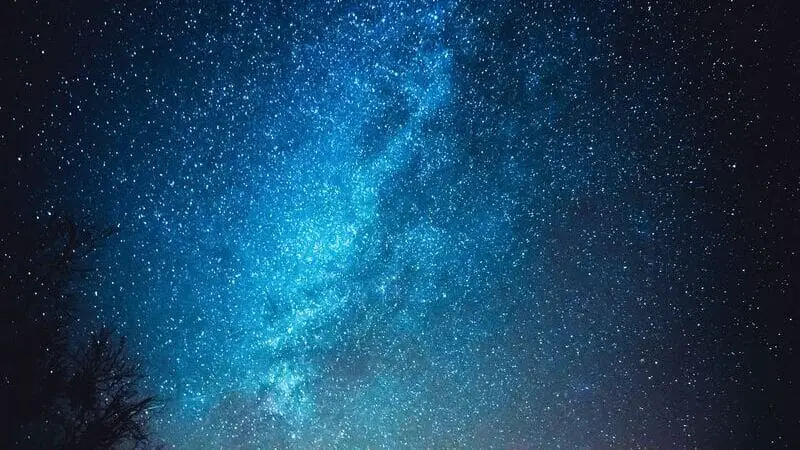
Why is stargazing ideal at Copper Breaks State Park?
Stargazing is ideal at Copper Breaks State Park because of its low light pollution and high sky quality.
Light pollution is the artificial light that brightens the night sky and obscures the stars. Sky quality measures how well you can see celestial objects in the sky.
The Bortle Dark-Sky Scale is a tool that astronomers use to rate sky quality from Class 1 (the darkest skies available on Earth) to Class 9 (inner-city skies). Copper Breaks State Park has a Bortle Scale rating of 2, which means it has very dark skies with excellent visibility of stars, planets, constellations, nebulae, galaxies, and even the Milky Way.
The park also has a Clear Sky Chart that forecasts sky conditions such as darkness, cloudiness, transparency, and seeing quality.
FREE STARGAZING CHECKLIST
My 5-page Stargazing Checklist will enhance your astronomical observations.
Follow this free checklist to navigate the night sky with confidence, clarity, and a sense of preparedness for a rewarding stargazing experience.

Optimal stargazing areas within the park
The park has several optimal stargazing areas within its boundaries.
One is the Big Pond equestrian campsites (open to all campers), which offer a front-row seat to the sunrise, sunset, and night sky.
Another one is the Juniper Ridge Nature Trail (hiking only), which is a short, challenging hike to incredible views of the red rock landscape and the starry sky.
You can also enjoy Texas stargazing from any other campsite or picnic area in the park.
Golden Tips for Stargazers
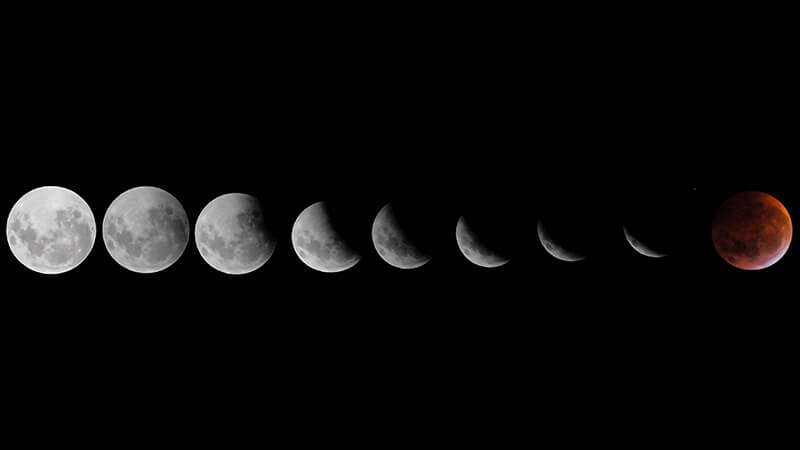
Best time to visit for stargazing
The best time to visit Copper Breaks State Park for stargazing is when there is little or no moonlight. The moon can be very bright and wash out fainter stars. You can check the current moon phase information for Copper Breaks State Park or see the current moon phase calendar to plan your visit accordingly.
The best seasons to visit are spring and fall when the weather is mild and clear. The park offers monthly star parties from April through November and other night sky programs throughout the year. Check their Events page for the schedule.
How to maximize your stargazing experience
To maximize your stargazing experience at Copper Breaks State Park, you should follow these tips:
- Bring binoculars or a telescope if you have one. They will help you see more details and colors of celestial objects. You can also borrow binoculars from the park headquarters or join a ranger-led program that provides telescopes.
- Use a red flashlight or cover your regular flashlight with red paper or plastic. Red light preserves your night vision and does not interfere with other stargazers. Avoid using white or bright lights like cell phones, cameras, or car headlights.
- Give your eyes time to adjust to the dark. It can take up to 30 minutes for your eyes to fully adapt to the low light conditions. During this time, avoid looking at any bright sources of light. You will be amazed at how much more you can see once your eyes are dark-adapted.
- Use a star map or an app to help you identify and locate stars, planets, constellations, and other objects in the sky. You can download a star map from the park’s website or get one from the park headquarters. You can also use apps like SkyView, Star Walk, or Stellarium on your smartphone or tablet. However, turn on your device’s night mode or red filter to avoid disturbing your night vision and other stargazers.
- Learn some star lore and stories from different cultures and traditions. Stargazing is both a scientific activity and a cultural and spiritual one. You can enrich your stargazing experience by learning about the myths, legends, and histories associated with the stars and constellations. You can find some star lore on the park’s website or join a ranger-led program that shares some stories.
Stargazing etiquette at the park
To ensure a safe and enjoyable stargazing experience for yourself and others at Copper Breaks State Park, you should follow these etiquette rules:
- Respect the park rules and regulations. You can find them on the park’s website or at the park headquarters.
- Respect other stargazers and their equipment. Do not touch or use someone else’s binoculars or telescope without permission. Do not shine your flashlight or any other light source at them or their equipment. Do not make loud noises or play music that might disturb them.
- Respect the park environment and wildlife. Do not litter or damage any plants or animals in the park. Stay on designated trails and campsites. Do not feed or approach any wildlife in the park.
- Respect the dark sky and its beauty. Do not use any unnecessary lights that might contribute to light pollution. Turn off your car headlights and interior lights when parked. Minimize using cell phones, cameras, or other devices emitting light. Enjoy the natural darkness and silence of the night sky.
Understanding light pollution

Importance of low light pollution for stargazing
Light pollution is one of the main threats to stargazing and astronomy. The excessive and inappropriate use of artificial light brightens the night sky and obscures the stars. Light pollution affects our ability to see and appreciate the night sky and our health, wildlife, energy consumption, and climate change.
Low light pollution is essential for stargazing because it allows us to see more stars and celestial objects with greater clarity and contrast. It enhances our sense of wonder and connection with nature and the universe.
How Copper Breaks State Park optimizes low light noise
Copper Breaks State Park optimizes low light noise by implementing several measures to reduce and control artificial light within and around the park. Some of these measures are:
- It uses only shielded, downward-facing outdoor lighting fixtures that minimize glare and light trespass.
- It uses only warm-colored bulbs that have a low color temperature (below 3000 Kelvin) to minimize blue light emission.
- It uses only motion sensors or timers that turn off lights when unnecessary.
- It is educating visitors and staff about the importance of dark skies and how to protect them.
- It collaborates with local communities and organizations to promote dark sky awareness and practices.
What to Expect
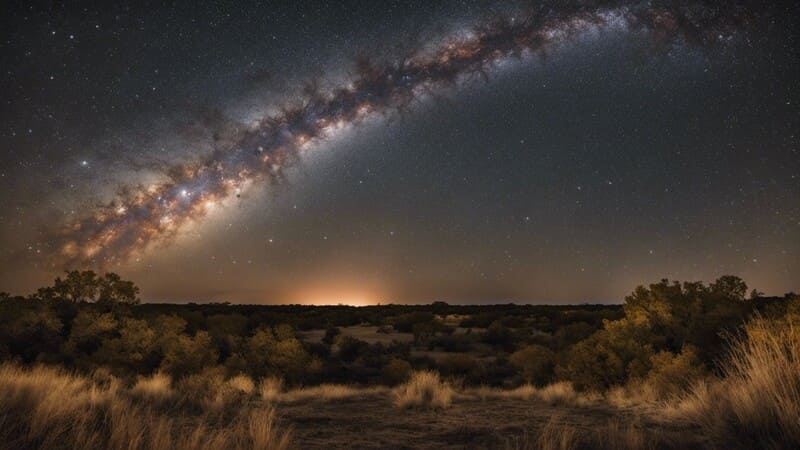
A Night Under the Stars
A night under the stars at Copper Breaks State Park is an unforgettable experience that will leave you in awe and wonder.
You will see thousands of stars twinkling in the dark sky, planets, constellations, nebulae, galaxies, and even the Milky Way galaxy stretching across the horizon. You will also be able to witness some spectacular astronomical events, such as meteor showers, eclipses, comets, satellites, and the International Space Station passing by.
You will feel part of a larger and more mysterious universe. You will also learn more about the stars and their stories from the park rangers and volunteers, who will guide you through the night sky with their knowledge and passion.
Star-Walk Program
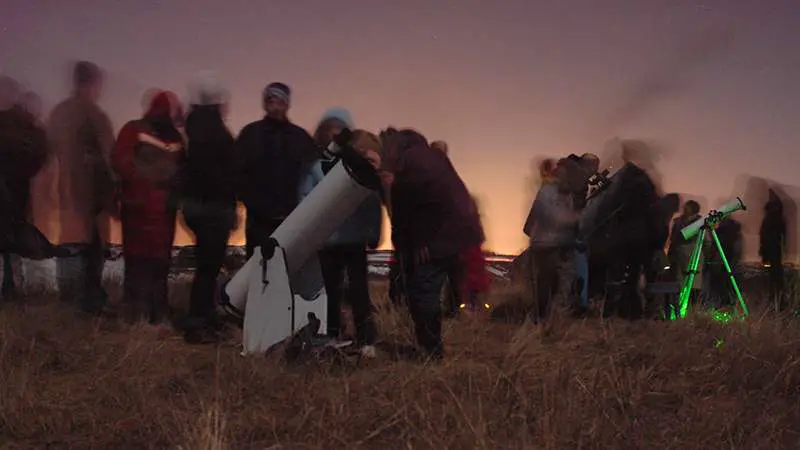
One of the best ways to enjoy stargazing at Copper Breaks State Park is to join the Star-Walk Program, a monthly event on the Saturday closest to the new moon from April through November.
The Star-Walk Program is a free, family-friendly, and educational program consisting of a star talk and a star walk. The star talk is a presentation that introduces you to the basics of astronomy, such as how to use a star map, identify constellations, and find planets and other objects in the sky.
The star walk is a guided night sky tour, where you can use binoculars or telescopes provided by the park or bring your own to observe the stars and their wonders.
The Star-Walk Program is led by park rangers and volunteers from the Texas Astronomical Society of Dallas, eager to share their expertise and enthusiasm with you.
What can you see in the starry sky from The Copper Breaks State Park?

The starry sky from Copper Breaks State Park is a treasure trove of celestial objects that will dazzle your eyes and imagination. Depending on the season and time of night, you can see different stars, planets, constellations, and other objects in the sky. Some of the highlights are:
- The Milky Way: The Milky Way is our home galaxy, which contains billions of stars, including our sun. From Copper Breaks State Park, you can see the Milky Way as a bright band of light that spans the sky from horizon to horizon. You can also see some of its features, such as the dark dust lanes, the galactic center, and the galactic bulge.
- The Planets: The planets are some of the sky’s brightest and most recognizable objects. From Copper Breaks State Park, you can see all eight solar system planets at different times of the year. You can also see some of their moons, such as Jupiter’s four largest moons (Io, Europa, Ganymede, and Callisto) and Saturn’s largest moon (Titan).
- The Moon: The moon is our natural satellite, which orbits around the Earth every 27 days. From Copper Breaks State Park, you can see the moon’s various phases, from the new to the full moon. You can also see some of its features, such as craters, mountains, valleys, and seas.
- The Sun: The sun is our star, providing light and heat. From Copper Breaks State Park, you can see the sun during the day, sunrise, or sunset. You can also see some of its phenomena, such as sunspots, solar flares, and solar eclipses. However, you should never look directly at the sun without proper eye protection, as it can cause permanent damage to your eyesight.
- The Constellations: The constellations are groups of stars that form patterns or shapes in the sky. From Copper Breaks State Park, you can see about 88 constellations throughout the year. Some of them are based on ancient myths and legends, such as Orion (the hunter), Ursa Major (the big bear), or Scorpius (the scorpion). Some of them are based on modern inventions or discoveries, such as Microscopium (the microscope), Telescopium (the telescope), or Pyxis (the compass).
- The Nebulae: The nebulae are clouds of gas and dust that glow or reflect light from nearby stars. From Copper Breaks State Park, you can see some of the most famous and beautiful nebulae in the sky. Some are emission nebulae, which emit their light due to ionization by hot stars. Examples are the Orion Nebula (a stellar nursery where new stars are born), the Lagoon Nebula (an immense cloud with a bright central region), and the Trifid Nebula (a three-lobed cloud with different colors). Some of them are reflection nebulae, which reflect light from nearby stars. Examples are the Pleiades (a cluster of young blue stars surrounded by dust) or the Witch Head Nebula (a cloud that resembles a witch’s profile).
- The Galaxies: The galaxies are collections of billions of stars, gas, dust, and dark matter that are held together by gravity. From Copper Breaks State Park, you can see some of the nearest and brightest galaxies in the sky. Some of them are spiral galaxies with disk-shaped structures with arms that spiral outwards. Examples are the Andromeda Galaxy (the closest large galaxy to our own), the Whirlpool Galaxy (a galaxy that is interacting with a smaller companion), or the Sombrero Galaxy (a galaxy that has a prominent central bulge and a dark dust lane). Some of them are elliptical galaxies with a spherical or oval-shaped structure with no distinct features. Examples are the M87 Galaxy (a massive galaxy that has a supermassive black hole at its center), the Centaurus A Galaxy (a galaxy that has a prominent dust lane and radio jets), or the Leo I Galaxy (a dwarf galaxy that orbits around the Milky Way).
Other related activities
Hiking and exploring Copper Brakes State Park during the day
Stargazing is not the only activity that you can enjoy at Copper Breaks State Park.
During the day, you can also explore the park’s natural beauty and history by hiking and biking on its trails. The park has over 10 miles of trails that range from easy to challenging and offer scenic views of the red rock formations, the lake, and the wildlife. Some of the trails are:
- The Bull Canyon Trail (1.8 miles round trip): This trail is an easy hike that takes you along the edge of Bull Canyon, where you can see some of the copper-colored rocks that give the park its name.
- The Rocky Ledges Trail (2.4 miles round trip): This trail is a moderate hike that takes you through a rocky landscape with steep slopes and ledges, where you can see some of the park’s geological features and fossils.
- The Juniper Ridge Nature Trail (0.8 miles round trip): This trail is a challenging hike that takes you to the top of Juniper Ridge, where you can enjoy panoramic views of the park and the night sky.
Overnight camping under the starry sky
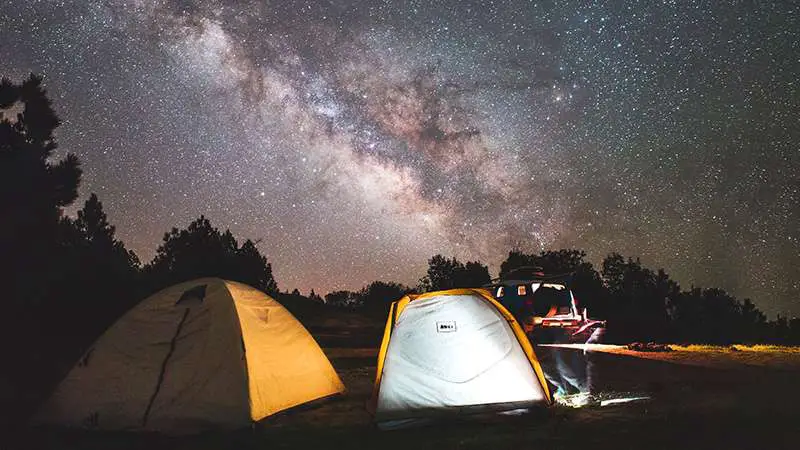
To extend your stargazing experience at Copper Breaks State Park, you can camp overnight under the starry sky. The park has 51 campsites that accommodate tents, trailers, or RVs. The campsites have water and electricity hookups, picnic tables, fire rings, and lantern posts. Some of the campsites also have restrooms and showers nearby. You can reserve your campsite online or by phone in advance or check for availability at the park headquarters on arrival.
Camping at Copper Breaks State Park is a great way to immerse yourself in nature and enjoy the tranquility and beauty of the night sky.
How to Prepare for Your Visit

What to pack for stargazing
To prepare for your visit to Copper Breaks State Park for stargazing, pack some essential items to make your experience more comfortable and enjoyable. Some of these items are:
- A red flashlight or a regular flashlight with red paper or plastic cover.
- Binoculars or a telescope if you have one.
- A star map or an app to help you identify and locate celestial objects.
- Warm clothing and blankets will keep you cozy on the cold night.
- Snacks and drinks will keep you hydrated and energized.
- A camera or a smartphone to capture some memorable photos of the night sky.
Camping requirements
If you plan to camp overnight at Copper Breaks State Park, you should also follow some camping requirements to ensure your safety and comfort. Some of these requirements are:
- You must have a valid entrance permit and camping reservation for your stay.
- You must check in at the park headquarters upon arrival and check out before leaving.
- You must set up your campsite only in designated areas and keep it clean and tidy.
- You must follow the park rules and regulations regarding fire, noise, pets, wildlife, etc.
- You must respect other campers and stargazers and their privacy.
Summary: Copper Breaks Stargazing

Thank you for reading my article on Copper Breaks State Park Stargazing. Copper Breaks is not the only place in Texas where you can enjoy stargazing. Other state parks and natural areas also offer visitors dark skies and night sky programs. Some of them are:
- Big Bend National Park: This park is in southwest Texas, along the border with Mexico. It is one of the country’s largest and most remote national parks and has a Bortle Scale rating of 1, meaning it has the darkest skies available on Earth. The park offers star parties, night hikes, and astronomy talks.
- Enchanted Rock State Natural Area: This natural area is in central Texas, near Fredericksburg. It is famous for its massive pink granite dome that rises above the surrounding landscape. It has a Bortle Scale rating of 3, which means it has dark skies with good visibility of stars.
- South Llano River State Park: This state park is in west-central Texas, near Junction. It is a popular destination for fishing, kayaking, and tubing on the South Llano River. It has a Bortle Scale rating of 4, which means it has rural skies with fair visibility of stars.
Stargazing at Copper Breaks State Park is a fantastic opportunity to explore the uncharted territory of the night sky. You will be able to see and learn about the stars and their stories and experience the beauty and wonder of nature and the universe. You will also be able to connect with yourself and others who share your curiosity and passion for stargazing. Whether you are a beginner or an expert, a solo traveler or a family member, a day visitor, or an overnight camper, you will find something that will suit your interests and needs at Copper Breaks State Park.
So what are you waiting for? Grab your red flashlight and binoculars, and head to Copper Breaks State Park for an unforgettable stargazing adventure.
Happy Stargazing!
Additional articles from my Dark Sky Parks series you may enjoy:
- Acadia National Park
- Anza-Borrego Desert State Park
- Arches National Park
- Big Bend National Park
- Bryce Canyon National Park
- Capulin Volcano National Monument
- Cherry Springs State Park
- Cosmic Campground Dark Sky Sanctuary
- Death Valley National Park
- Enchanted Rock State Natural Area
- Grand Canyon National Park
- Great Basin National Park
- Haleakala National Park
- Joshua Tree National Park
- Massacre Rim Dark Sky Sanctuary
- Olympic National Park
- Oracle State Park
- Red Rock Canyon State Park
- Rocky Mountain National Park
- Tonopah Stargazing Park
- Yellowstone National Park
- Zion National Park




